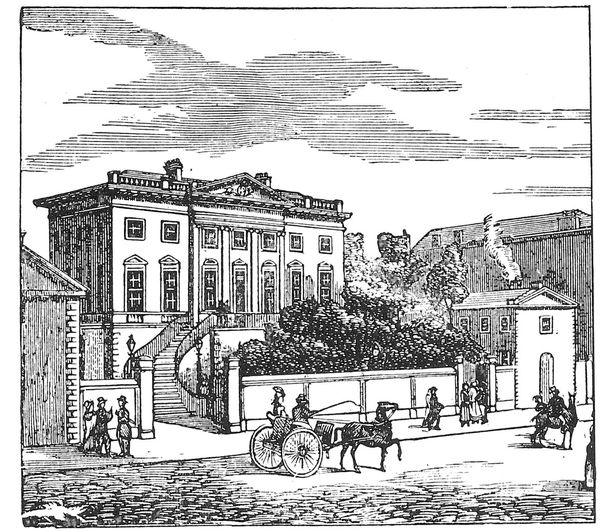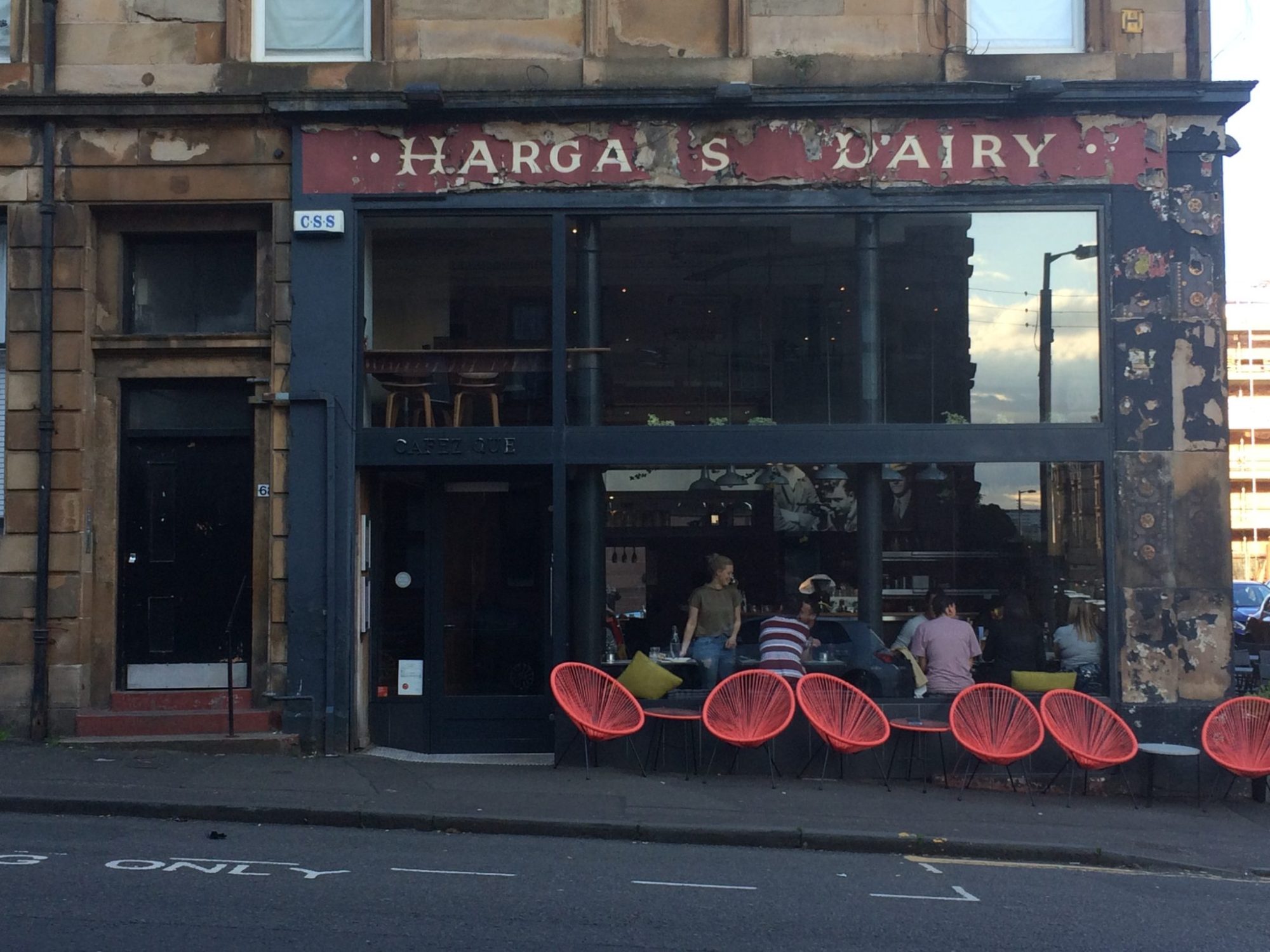This October Glasgow City Heritage Trust celebrates Black History Month (BHM) with a series of interview blogs. Our second and last interview is with Angela Massafra and Katie Bruce from GoMA with their project “At Home”.
Whilst in the past Black History Month focused more on the recognition of the many contributions that people of African and Caribbean backgrounds have made to the UK across many generations, nowadays BHM is more inclusive, and commemorates and honours the history and achievements of all the people of colours in the UK.
As a charity that works to promote the understanding, appreciation and conservation of Glasgow’s historic built environment, we are aware of how much of this city’s rich architectural heritage is built on the UK’s imperial past. GCHT understands that we have a role to play in helping to build a better society that is just, diverse and anti racist.
We are working to ensure the projects we support are more representative of Glasgow’s diverse communities, and we are committed to supporting projects from a variety of voices. If you know of any projects which could be eligible for our funding, or if you’d like to discuss ideas with us, or ways in which we could provide a platform, please let us know as we would be delighted to help.
2nd Interview: Angela Massafra, Learning and Access Curator & Katie Bruce, Producer – Curator, At Home, Gallery of Modern Art (GoMA)
At Home is a project funded by a GCHT Heritage Grant that will support the “creation of a new series of online talks, artist commissions and workshops that respond to the exhibitions Stones Steeped in History and Domestic Bliss, which explore Glasgow’s relationship with Empire and Slavery, and GoMA’s history as a Tobacco Lord’s house and subsequently the city’s Royal Exchange. A significant part of the grant will be used to digitise our handling box with objects related to the history of the building, continuing to tell the story of GoMA’s built heritage both in the venue and online.”
Katie Bruce, Producer Curator, Gallery of Modern Art (GoMA)
If you have a project in mind, get in contact! https://www.glasgowheritage.org.uk/grants/

In your application, you mentioned that gallery assistants at GoMA are often asked about the building’s history, what do you think is the public perception of Glasgow’s role in the slave trade?
For a long time, Glasgow’s involvement in the slave trade was perceived as minimal, especially if compared to other major UK centres of Liverpool or Bristol. However, things have been changing in recent years. Glaswegians and people visiting Glasgow are now asking questions about uncomfortable truths related to our city’s past. Many of our visitors are more aware than ever that much of the Merchant City was built on the back of slavery, and that Glasgow’s wealth comes from slave trade, as well as tobacco, sugar, and cotton.
Even before recent events fuelling the Black Lives Matter protests, the public had already started demanding change or acknowledgment of the reminders of Glasgow’s part in slavery, such as street names commemorating tobacco lords and statues of slave traders.
Some of these discussions happened at GoMA itself, sparked either by our exhibitions or learning programmes. Our permanent displays “Stones Steeped in History” and “Domestic Bliss” are both dealing with different aspects of the building’s past as the Tobacco Lord William Cunninghame of Lainshaw’s mansion and his involvement in the export of tobacco grown on plantations which used slave labour. Other conversations are directly facilitated by our learning team, in sessions with our handling box of colonial, slavery and empire-related museum objects, and workshops focusing on the history of the building.
In all these exchanges, the majority of our visitors have shown some awareness of the topic but most of all, they’ve all displayed a clear desire to know more.
How has the current pandemic affected your plans?
The Covid-19 pandemic had a deep effect on several aspects of our organisation. The first is obviously its financial impact. Due to Covid-19, our museums, galleries, cultural venues and libraries closed to the public in March 2020. Through a robust and lengthy recovery planning process, we are now beginning to re-open our venues on a phased basis. However, since March we have not received any income from our venue cafes and shops, special exhibition tickets, or from the donation boxes.
Another aspect radically altered by Covid-19 is our public programme. Our main space, Gallery 1, has been left empty until February 2021, due to the postponement of Glasgow International, Scotland’s biennial festival of contemporary visual art.
Furthermore, with the closure of our buildings, we were obviously forced to suddenly cancel all our face-to-face events and activities, which would have brought hundreds of visitors closer to our building’s history and exhibition.
However, throughout this difficult time, our staff have gone above and beyond to continue engaging with audiences and try different tools of digital delivery. Most of this work has gone into our blog, galleryofmodernart.blog, which we regularly update with new content. Either producing engaging collection-based activities for families to try at home, or recording curators’ talks on video, the last few months have been a testament to our commitment to sharing our history and collections with the public.
What are the main challenges and advantages of the digital delivery of “At home”?
The digital delivery of our programme “At Home” had to face several challenges, especially at the beginning of the lockdown. Glasgow Life is still quite early in its digital evolution and one of the first challenges was the lack of equipment for all our staff working from home.
A still current challenge is the wide variety of content available on the internet, which increased dramatically in the past few months. With so many digital activities, talks, even virtual visits and tours, we need to offer something special and unique to attract the public and make sure to market it effectively. Even when all these conditions are met, people are affected by the pandemic and the response to new digital programmes can sometimes be slow.
However, going digital has some clear advantages. First of all, we now have the ability to bring our programmes to anyone with an internet connection. Our “visitors” can simply check our blog at any point during the day and spend as much or as little time as they want exploring the content that we have curated for them. This has the potential for breaking down geographical, financial, and cultural barriers, enabling us to reach a much wider audience than before.
We have also been able to communicate more frequently and informally, through social media and other digital tools, with other museums and cultural institutions, both in the UK and abroad, receiving and giving feedback on each other’s programmes, cultivating relations that we hope will last even after the pandemic.
Do you think that in some ways the Covid pandemic helped to develop a digital audience for Glasgow’s heritage?
In many ways, yes. People spend much more time at home in front of their digital devices and our data demonstrated that, since March, in some areas, our digital audience has significantly grown, in just a few months, we’ve gained over a thousand Instagram followers.
However, some internal research at Glasgow Museums has also shown the onset of a “digital fatigue” after the first few weeks of lockdown. We all are now trying to strike a balance between looking at screens for work and for leisure. As many other cultural institutions, we are therefore trying to give our audience a good reason to keep looking at the screen even when not working, by offering thought-provoking and original content.
How do you make sure you are creating content that is representative of diverse voices? Do you have any advice for other organisations that are aiming to do the same?
One of the main things we do to be as representative as possible is to be very open about our gaps in representation itself. Our organisational aim is to inspire people in Glasgow to enhance their wellbeing, create a culture of learning and creativity, and a sense of belonging through our museums and collections. In order to achieve this, we are aware that we must drive and support meaningful change for all the diverse communities living in Glasgow.
From a practical point of view, it is imperative to work with partners and grassroots organisations in the territory. They know communities and their needs much better than us and we need to rely on them to make that change happen. We promote clear communication with our partners and employ approaches of co-curation and co-production in many of our projects, like in the recent queer timɘs school prints exhibition or in the work with our youth group.
We also try and think beyond funding-bound “projects” and, whenever possible, think long-term. We know that achieving full representation will take time and effort and cannot be reduced to a box-ticking exercise.
However, probably the most important advice we could give is to be acutely aware that we all have to do better. All museums and cultural institutions need to make an extra effort to make sure that all previously (and currently) under-represented groups feel welcome in our spaces and able to see themselves in our programmes. Here at GoMA, we don’t shy away from difficult topics and we welcome conversation aimed at improving the representation of diverse voices in our programmes.
Join our speakers database!
GCHT runs a quarterly events programme and we’re always looking for new stories to be told and new folk to tell them. We are also committed to improving access to heritage and to make heritage relevant to all regardless of background. If you can give a talk relating to Glasgow’s heritage, history, architecture, communities or culture we want to hear from you. Click on this link to join our speakers database: https://www.glasgowheritage.org.uk/speakers/
We are looking for new Trustees!
We are currently recruiting for 3 new Trustees. Applications are sought from enthusiastic and innovative individuals with business expertise at a senior level and a passion for Glasgow’s historic environment. We encourage applications from all backgrounds, communities and industries, and are committed to having a Board of Directors that is made up of diverse skills, experiences and abilities. We actively encourage BAME and disabled applicants and value the positive impact that difference has on our Board. The closing day to apply is this Friday, 30th October. Click here for more info and how to apply: https://www.glasgowheritage.org.uk/join-our-board-of-trustees/



